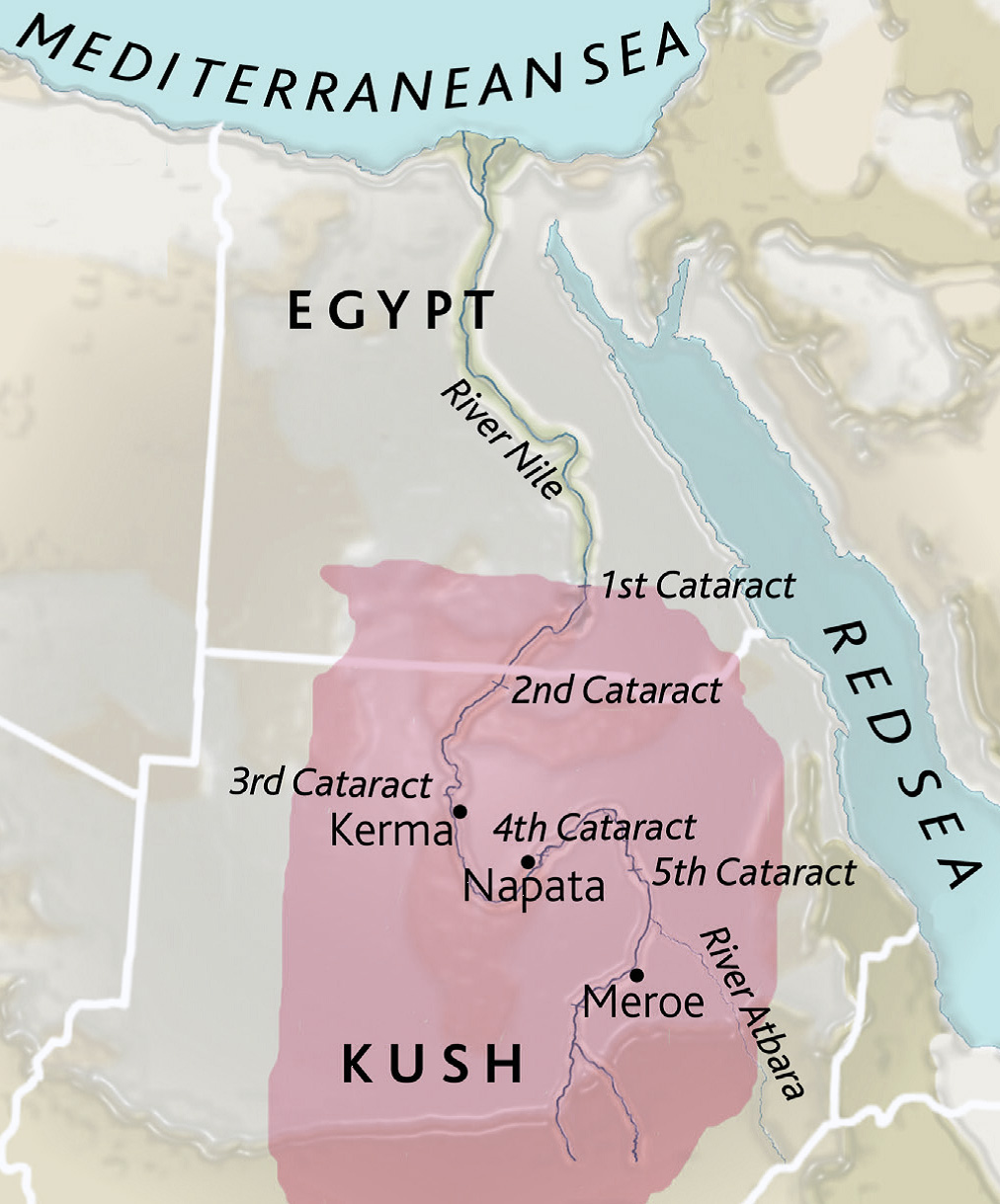Kingdom of Kush was the second African civilization after Egypt built by an Egypt people who lived between the Nile River’s first and third cataracts. This region around the first cataract, called Nubia, had been conquered and colonized by Egypt in the fourth millenium BC. Because of this, Egyptian civilization diffused southward and a new African kingdom was built up in the floodplain around the Nile‘s third cataract: the Kush. Their capital city was Kerma and it served as the major trading center for goods traveling north from the southern regions of Africa.
Kush attained its greatest power and cultural energy between 1700 and 1500 BC during the Intermediate period in Egypt. The domination of Egypt by the Hyksos allowed Kush to come out from under the hegemony of Egypt and flower as a culture This period ended, however, when the Egyptians kings (pharaohs) founded a New Kingdom, having thrown the Hyksos out of Egypt, reconquered Kush and brought it under Egyptian colonial rule.
However around 1000 BC, Kush again arose as a major power by conquering all of Nubia. The conquest of upper Nubia, which had been in the hands of the Egyptians since the fourth millennium, gave to Kush wealthy gold mines.
Following the reassertion of Kushite independence in 1000 BC, the Kushites moved their capital city farther up the Nile to Napata. The Kushites by and large considered themselves to be Egyptians and the proper inheritors of the pharoanic titles and tradition. They organized their society along Egyptian lines, assumed all the Egyptian royal titles, and their architecture and art was based on Egyptian architectural and artistic models. Their pyramids were smaller and steeper and they introduced other innovations as well, but the Napatan culture does not on the surface appear much different than Egyptian culture.
The Kushites even invaded and conquered Egypt in a magnificent irony of history. The Napatan kings formed the twenty-fifth dyansty in the eighth century BC. This dynasty came to an end with the Assyrian invasion of Egypt in the seventh century BC.
Meroitic empire



The Assyrians, and later the Persians, forced the Kushites to retreat farther south. This retreat south eventually closed off much of the contact that the Kushites had with Egypt, the Middle East, and Europe. When Napata was conquered in 591, the Kushites moved their capital to Meroe (today in Sudan territory) right in the heart of the Kushite kingdom. Because of their relative isolation from the Egyptian world, the Meroitic empire turned its attention to the sub-Saharan world. For most of its prosperous life, the Meroitic empire served as the middle term in the trade of African goods to northern Africa, the Middle East, and Europe. While it still continued the cultural traditions of Egypt, the Meroites developed newer forms of culture and art because of their isolation from the northern kingdoms.
Many of these innovations occurred in the realm of government. Unlike in Egypt, the king in Meroitic empire ruled through a customary law that was established and interpreted by priests. The king was also elected, but he was elected from the royal family. As in Egypt, descent was reckoned through the mother’s line. Eventually, however, this descent model produced a series of monarchs who were women, an innovation not seen in any other major civilization.
The Kushite religion closely resembled Egyptian religion. It was polytheistic and contained all the major Egyptian gods. Amon was the principal god, but as in Egyptian religion, Meroitic religion involved regional gods which were served as principal gods in their region. There are some non-Egyptian gods, such as a lion warrior god, which the Meroites probably derived from southern African cultures, but these gods were few. The Meroitic Empire thrived throughout the last half of the first millennium BC. After three centuries of decline, it was finally defeated by the Nuba people. It’s commercial importance was replaced by Aksum to the east.
